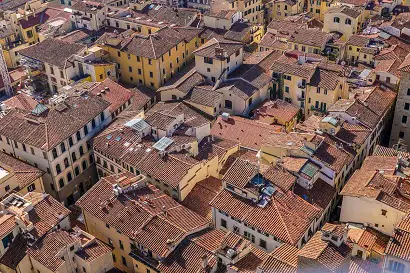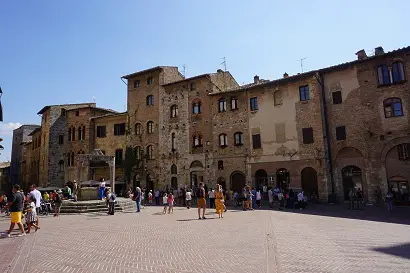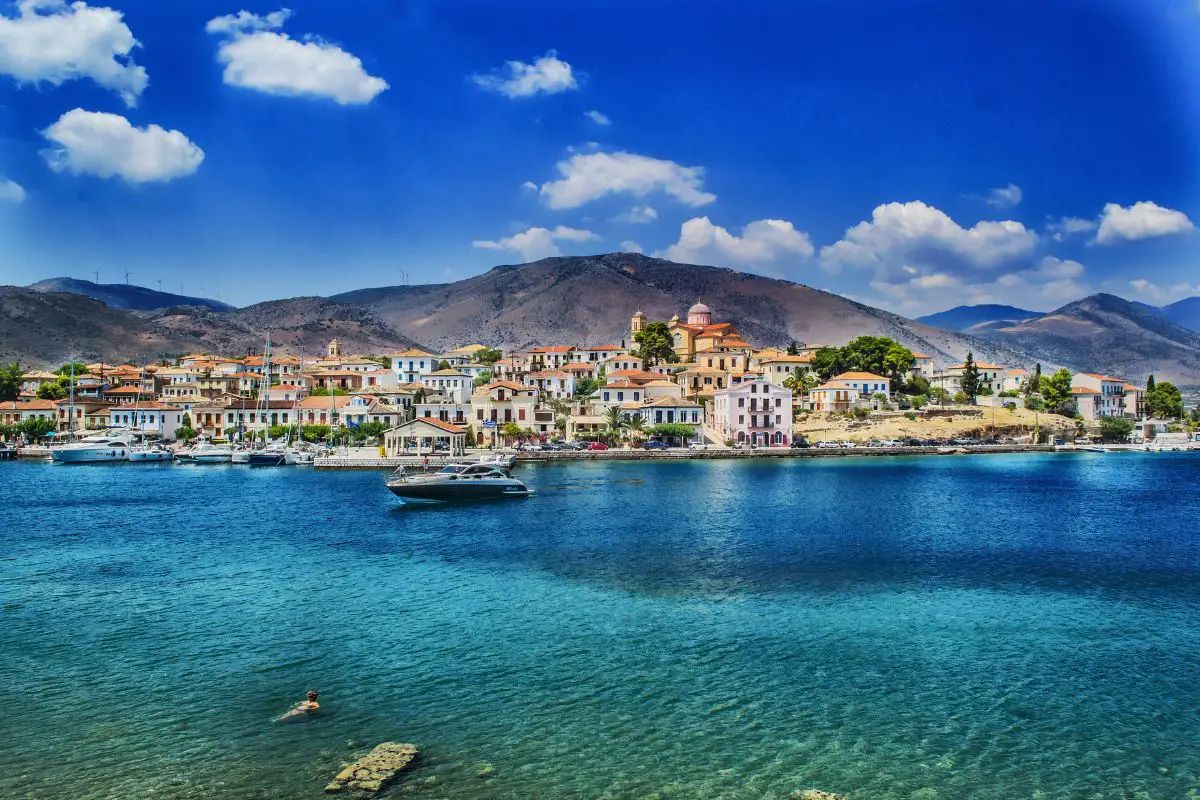Italy is well known for its beautiful architecture, however, due to Italy’s diversity, it cannot be limited to one isolated era or style. Particularly notable is ancient Rome, taking the presidency for Italy’s architectural achievements with its temples and aqueducts.

But you may have noticed that many Italian buildings differ from your own back home, for example, their size and compactness. So what is the reason for this?
Italian houses are typically small for several reasons including temperature control and personal security, however, the defining factor is due to how much cheaper it is to build more, smaller homes as opposed to less, larger homes.
In this article, we are going to be going into more detail about each of the reasons listed above.
Why Are Italian Houses So Close Together?
There are many reasons, or ‘theories’, as to why houses in Italy are compact, all of which will hold an element of truth.
First off, the summer in Italy is very hot, reaching up to 42 degrees Celsius in the north – that’s 107 degrees in Fahrenheit! In some cases, houses are designed to be close together with space for trees and breezeways in between in order to keep villages cool during high temperatures.
Over 50% of Italians live in apartments. Such demand means that even modern buildings are crammed. The difference is that these houses are less picturesque, generally forming a ring of concrete. They are however more stable than the older, more aesthetic alternatives. The second impression of close quarters is that Italian people feel more secure when they live in flat blocks as opposed to individual houses.
However, the principal reason here comes down to economical value. A higher quantity of smaller houses is cheaper to build than fewer homes of a higher quality. Less material was needed, and in ancient times, fewer city wall was needed in case of trouble.
Most of Europe, including Italy, was occupied before the industrial revolution. So, when this happened, masses of people had to leave their rural homes and move into the city in order to get jobs. Consequently, city houses were built in demand with many compromises.
Furthermore, hundreds of years ago most people did not own their land or dwellings, so only the rich who did own their own land could afford to build large properties. A lot of the land that surrounded cities was privately owned by farmers, where outside dwellings could not be built.
Why Are Italian Houses So Small?

You may have noticed that as well as Italian houses being close together, they are also rather small. On average, Italian homes are 81 square meters. This makes them even smaller than Spanish homes at an average of 97 square meters, and Germany at an average of 109 square meters.
In comparison to America, the difference in size is massive, as a medium home in the US is a whopping 225 square meters. Those traveling from the UK may not feel so cramped, with an average of 76 square meters.
Regardless, since Italian houses and flats are on the smaller side, several adjustments have been made.
For example, the bathrooms are generally made small. For this reason, not many Italian homes will have a bath, and if they do, they are often 3 quarters the size of a normal bath. Kitchens also tend to be fairly small, so washing machines have to fit in the bathroom, if they can’t, they will be put in a garage.
For a larger European country, Italy falls high on the list of overcrowding with 30% of all families living in overcrowded homes. Unfortunately, this number is ever-growing. Whilst in the meantime, 15% of the Italian population have larger than deemed necessary houses.
Are Houses in Italy Cheap to Buy?
Although properties in Italy may seem expensive in comparison to some of its neighboring countries such as Greece or Spain, house prices are still fairly affordable.
Like any country, trying to buy properties in major cities including Milan, Florence, or Venice, can bring up some shocking prices. However, Italy typically has houses just a small distance away from prime locations with significantly lower prices. Although more rural, these towns still offer all the amenities you would need.
To compare, you could buy a three-bedroom detached home with a spacious lawn in lesser-known Italian towns for the same price as a one-bedroom bungalow in England.
On top of this, the cost of living in rural Italy is fairly low (again, not including major tourist cities). Local taxes in rural locations are significantly lower, and since local produce is available in abundance, so are groceries. Transport such as trains, buses, and even internal flights are also less expensive, making it cheap to travel around the country.
The best part is, that if you become an Italian resident, you no longer need to pay council tax and you will get a reduced electricity rate.
Are European Houses Generally Small?
Houses in Europe do tend to be small, and affordable houses are always lacking. Because of this, almost half of the population all-throughout Europe lives in apartments rather than houses. For many, homeownership is out of reach, and even renting is becoming a struggle.
Why Are Houses in America So Big?
People often believe that America has bigger homes than other countries because they have more land area, however, this isn’t the case. Older American houses, even in the suburbs were quite modest; however, over the 20th century, larger houses were encouraged by a combination of home marketing, updated government policies, and the invention of cheaper mass production.
Let’s not forget that America is a much newer country than those in Europe. Hundreds of years ago, people couldn’t afford to heat larger houses, so for older countries, small was the only way to go. The majority of those buildings are still standing.
European and American houses are generally the go-to comparison point due to the difference in how construction in each location has turned out. Currently, around 85% of the American population lives in detached homes. Larger houses do come with downsides though, such as larger electricity and gas costs, higher taxes, and higher insurance costs.
- The Top Restaurants Specializing in Truffle Dishes - August 10, 2023
- Truffle Panna Cotta: A Decadent Dessert Recipe for Truffle Lovers - August 7, 2023
- Truffle Scrambled Eggs: A Luxurious Breakfast Delight - August 7, 2023








